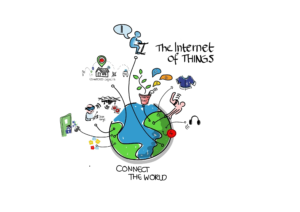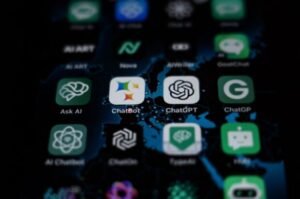Understanding the Basics of Quantum Computing for Beginners

Understanding the basics of quantum computing is becoming increasingly important in today’s technological landscape. The potential applications of this revolutionary field are vast and transformative, from drug discovery to materials science and beyond. This article will serve as a comprehensive guide to navigate the fundamentals, demystifying complex concepts and illuminating the path to a more profound understanding of quantum computing for beginners. The core principles are explained clearly, and each concept is explored with concrete examples and practical illustrations. This article is structured to first explain the fundamental ideas of qubits, then quantum gates, followed by the concepts of superposition, entanglement, and algorithms. This allows a reader to build a coherent picture of quantum computing piece by piece.
1. Qubits: The Building Blocks of Quantum Information
1.1 Defining Qubits
Qubits are the fundamental units of information in quantum computing, analogous to bits in classical computing. Unlike classical bits, which can only exist in a definite state of either 0 or 1, qubits can exist in a superposition of both 0 and 1 simultaneously. This inherent property allows quantum computers to perform computations on multiple possibilities at once, vastly increasing their potential computational power compared to classical computers. Imagine a coin spinning in the air; it’s neither heads nor tails until it lands. This uncertainty is precisely what allows qubits to exist in a superposition.
1.2 Physical Realizations of Qubits
Various physical systems can be harnessed to represent qubits, including trapped ions, superconducting circuits, photons, and quantum dots. Each physical implementation has its own set of advantages and challenges. Trapped ions, for instance, offer excellent control and coherence times, while superconducting circuits are well-suited for scalability. This diverse range of physical platforms underscores the vibrant landscape of research in quantum computing.
2. Quantum Gates: Manipulating Qubits
2.1 Introduction to Quantum Gates
Quantum gates are analogous to logic gates in classical computing, but they operate on qubits using quantum mechanics. These gates manipulate the superposition states of qubits and perform specific operations. Think of them as instructions to perform tasks on our quantum data. Examples include the Hadamard gate, which puts a qubit into superposition, and the CNOT gate, which entangles two qubits. The precise arrangement of quantum gates dictates the computation performed by the quantum computer.
2.2 Types of Quantum Gates and Their Functionality
There are many types of quantum gates, each serving a specific purpose. Some common quantum gates include the Hadamard gate, the Pauli-X, Pauli-Y, and Pauli-Z gates, the CNOT gate, and the Toffoli gate. Each gate has a specific function, enabling a range of complex operations to be performed on qubits and influencing the outcome of quantum algorithms.
3. Superposition: The Power of Quantum Parallelism
3.1 Definition of Superposition
Superposition is a fundamental concept in quantum mechanics, allowing a quantum system to exist in multiple states simultaneously. In quantum computing, superposition allows a single qubit to represent multiple possibilities, vastly increasing the amount of information a quantum computer can hold. It’s essentially a way to explore many possibilities at once, a stark contrast to classical computation, which can only consider one possibility at a time. This ability to explore multiple possibilities concurrently is the key to the significant computational advantages of quantum computers.
3.2 Applications of Superposition in Quantum Algorithms
Superposition plays a vital role in various quantum algorithms. Algorithms like Shor’s algorithm and Grover’s algorithm rely on superposition to achieve exponential speedups over classical algorithms, significantly improving the efficiency of certain calculations. This exponential speedup potential makes superposition a key driver of the revolutionary potential of quantum computing.
4. Entanglement: Quantum Correlation
4.1 Understanding Entanglement
Entanglement is a quantum phenomenon where two or more qubits become linked in such a way that their fates are intertwined, regardless of the distance separating them. This means that the state of one entangled qubit instantaneously affects the state of the other entangled qubits, even if they are light-years apart. This non-local correlation is a core feature of quantum mechanics and a pivotal aspect of quantum computing, allowing for the creation of powerful computational resources.
4.2 Applications of Entanglement in Quantum Computing
Entanglement finds applications in quantum communication, enabling secure communication protocols. It also plays a crucial role in quantum teleportation, a process for transferring quantum states from one location to another. The potential of entanglement to revolutionize various fields, from cryptography to communication, underscores its significance in the landscape of quantum computing.
Related Post : How Biotech Is Pushing the Boundaries of Medicine and Healthcare
5. Quantum Algorithms: New Computational Paradigms
5.1 Overview of Quantum Algorithms
Quantum algorithms are specialized algorithms designed to exploit the unique properties of quantum computers, like superposition and entanglement, for faster computation compared to classical counterparts. Algorithms like Shor’s algorithm, for factoring large numbers, and Grover’s algorithm, for search problems, exemplify this potential. These algorithms represent a new paradigm in computation, pushing the boundaries of what’s possible.
5.2 Examples of Quantum Algorithms and Their Applications
Shor’s algorithm has the potential to break widely used encryption methods, while Grover’s algorithm can significantly speed up search problems. These examples highlight the potential of quantum computing to address problems intractable for classical computers. However, the practical implementation and application of these algorithms face considerable hurdles.
6. Challenges and Future of Quantum Computing
6.1 Overcoming the Hurdles
Despite the significant potential, quantum computing faces substantial hurdles. Building and maintaining stable quantum computers is incredibly challenging due to the fragility of quantum states. Decoherence, where quantum states lose their superposition due to interactions with the environment, is a major obstacle. Research and development are focused on developing error correction techniques, improving qubit coherence times, and scaling up quantum systems.
6.2 The Future of Quantum Computing
The future of quantum computing is promising. Continuous advancements in qubit technology, quantum algorithms, and error correction strategies will likely lead to more powerful and stable quantum computers. The ability to tackle complex problems in fields such as drug discovery, materials science, and financial modeling will accelerate progress, and the industry will continue to refine and improve the potential of quantum computing for the benefit of the future.
7. Conclusion of the Basics of Quantum Computing
7.1 Summary
Understanding quantum computing is not just about learning the theory behind qubits, superposition, and entanglement; it’s also about grasping the potential implications of this new technology across various fields, from medicine to materials science. With advanced techniques and ongoing research, the possibilities are almost limitless. Quantum computing has the potential to revolutionize various fields and present entirely new ways of solving challenging problems.
7.2 Final Thoughts
This article has given a glimpse into the world of quantum computing. The path forward is paved with innovation, and ongoing efforts to overcome the challenges will shape a future filled with groundbreaking solutions.
8. FAQs on Understanding the Basics of Quantum Computing
8.1 Q: What is the difference between quantum and classical computing?
A: The fundamental difference between quantum and classical computing lies in their respective units of information: bits vs. qubits. Classical computers use bits, which can be either 0 or 1; qubits, on the other hand, can exist in a superposition of both 0 and 1. This crucial difference allows quantum computers to explore multiple possibilities simultaneously, enabling them to potentially solve problems that are intractable for classical computers.
8.2 Q: What are some potential applications of quantum computing?
A: Quantum computing has the potential to revolutionize numerous fields. In materials science, it could lead to the design of new materials with tailored properties. Drug discovery could benefit from faster and more efficient methods for identifying potential drug candidates. In finance, it might unlock new ways to model complex financial systems. Finally, quantum computing could improve artificial intelligence and machine learning through more powerful algorithms and models to perform computations more effectively and efficiently.
In conclusion, understanding the basics of quantum computing is crucial for anyone seeking to navigate the technological advancements of the future. This article has provided a comprehensive overview of the core concepts, from qubit manipulation to entanglement and superposition. Now that you have a foundational understanding, consider exploring more advanced resources or perhaps enrolling in a course on quantum computing. This newfound knowledge can open doors to new opportunities in various fields, from research and development to practical applications and even career changes. Embrace the future of quantum technology and continue learning to stay ahead of the curve.
Share this content:














Post Comment